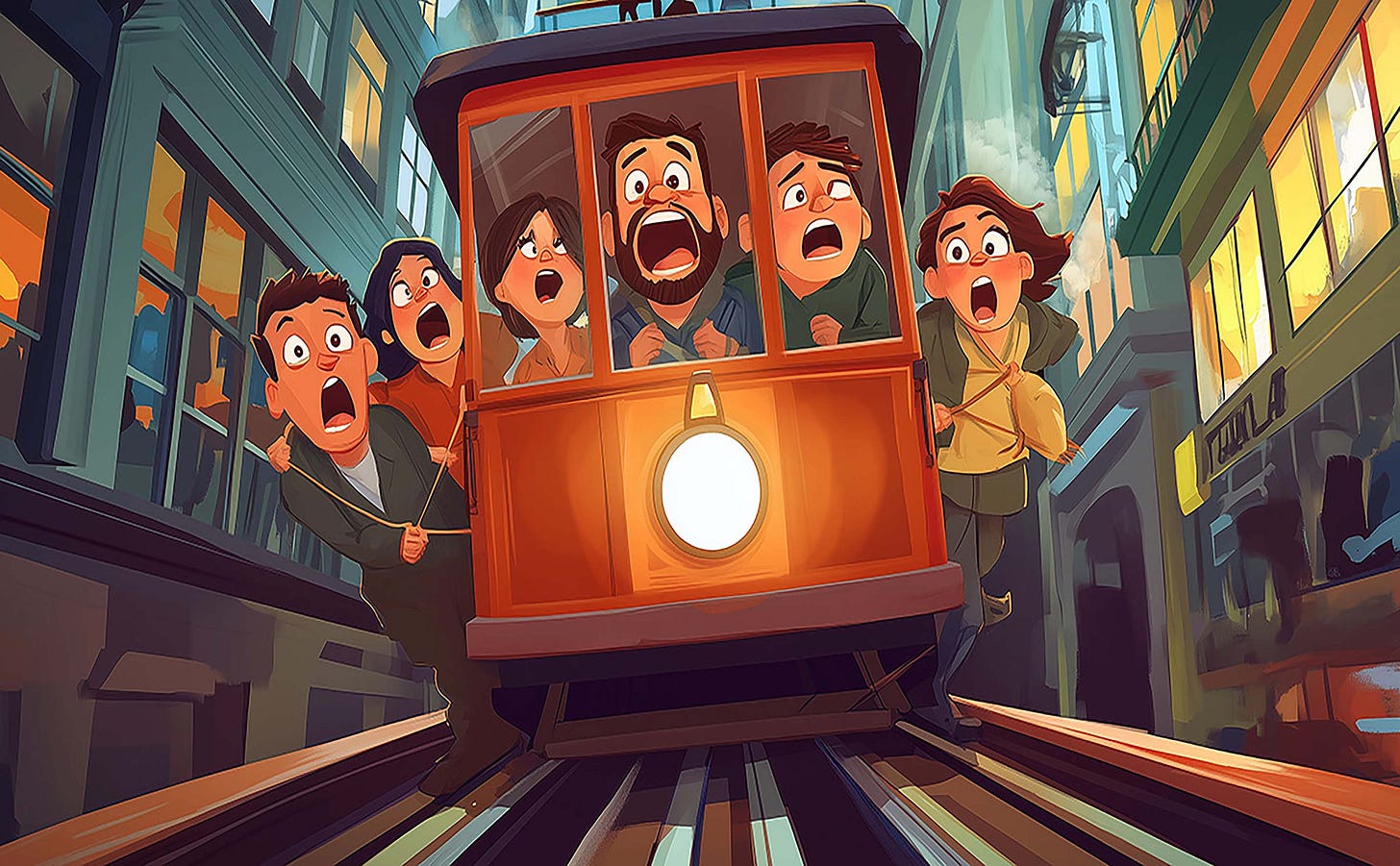On the Trolley Problem
You've seen the memes, but what's it all about?
Imagine the following scene. A trolley is careering out of control down a track. In its path are five people who have been tied to the track. They can’t escape, and will die if the trolley runs them down. The good news is that you can divert the trolley into a siding by flipping a switch. The bad news is that there is a person tied to the siding track who will die if you do so. Should you flip the switch or not?
This thought experiment, known as the trolley problem, was devised more than fifty years ago by the philosopher, Philippa Foot. At first thought, the right thing to do seems obvious: you should flip the switch to save the lives of the five people even though it will result in the death of one person. It’s bad, of course, that one person will die, but it would be much worse if five people died, so you need to get the trolley off the main track and into the siding.
Not so fast, says philosopher, Judith Jarvis Thomson. Maybe adding some variation to the scenario will result in a different intuition. This time imagine you’re standing next to a fat man on a bridge under which the trolley will pass. The same five people are tied to the track, but there is no siding into which the trolley can be diverted. However, you can save the five by throwing the fat man off the bridge into the path of the trolley. He will be killed, of course, but his bulk will stop the trolley, and the people tied to the track will survive. So, is this the right thing to do?
The moral calculation seems to be the same here as before - one life saves five. But this time most people would think it wrong to sacrifice the fat man to save the five people on the track. So why this difference? Why would it be okay to divert the trolley, but not to push the fat man off the bridge?
The beauty of the trolley problem is that despite the Herculean efforts of philosophers over the last half century, there is still no clear answer to this question. Moreover, the problem isn’t merely theoretical, but spills over into the real world whenever we are asked to consider whether it would be permissible to sacrifice the lives of a small number of people to save the lives of a greater number. So, for example, Thomson asks us to imagine a situation where it is possible to save five patients who desperately need transplants by harvesting the organs of a young man in perfect health. She comments that everybody to whom she puts this case responds that it would not be morally permissible to do such a thing. However, why this case is different from that of the trolley driver who may turn his trolley is not clear.
If you prefer your real-world examples to be a little less hypothetical, then consider the case of Eyam, a small village in Derbyshire, England, which was visited by the bubonic plague in 1665. The response of the villagers, under the guidance of the Reverends William Mompesson and Thomas Stanley, was to institute a self-policed quarantine to prevent the spread of the disease. The result of this act of selflessness was that 260 villagers out of a population of 800 died in ghastly fashion over a period of 14 months, but the infection was largely contained.
Here we have an example of a (relatively) small number of people sacrificing their lives so that an indeterminate larger number might live. Admirable, to be sure, but suppose the villagers had not been keen on the idea of a self-imposed quarantine, which would hardly have been surprising – in that circumstance, would it have been justified for the authorities to impose a quarantine to protect the wider population? It is certainly not particularly counterintuitive to think that it would have been justified, which suggests that we tend to view this situation differently than we do the case of the organ transplants. This time around it seems permissible to sacrifice the lives of a few to save the lives of many. Again, though, it just isn’t obvious why there should be this difference.
The trolley problem serves as a powerful lens through which we can examine the complexities of moral decision-making. By forcing us to confront difficult choices between action and inaction, and to weigh the relative value of human lives, it reveals the often contradictory nature of our ethical intuitions. As we delve deeper into this philosophical puzzle, we not only seek to resolve its central dilemma but also gain invaluable insights into the foundations of our moral reasoning. Ultimately, the hope is that by grappling with the trolley problem we will develop the tools to approach the most pressing ethical challenges of our time with greater clarity and nuance.




I'm very fixed on the conclusion that we don't have a right to do wrong for a greater end. This principle is pictured everywhere from movie villains to real life scenarios like Hitler trying to improve the gene pool, greatly exaggerated but the point is still there. He sincerely thought that it would have ended up with more overall human happiness, and maybe it would've, but that doesn't justify the holocaust. It's generally accepted that we don't get to treat human lifes as nothing more than a currency we wish to max out in, since when did we gain the right to play monopoly over human lives? So even if people are generally inclined to immediately minimize suffering, they also disagree with Thanos about killing half a planet so it becomes prosperous in the future. It's really not our decision.